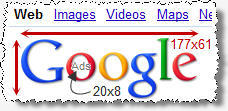Disclosure: I serve as a consultant to various companies that compete with Google. But I write on my own — not at the suggestion or request of any client, without approval or payment from any client.
Search engines have long labeled their advertisements with labels like "Sponsored links", "Sponsored results", and "Sponsored sites." Do users actually know that these labels are intended to convey that the listings are paid advertisements? In a draft paper we’re posting today, Duncan Gilchrist and I try to find out.
"Sponsored Links" or "Advertisements"?: Measuring Labeling Alternatives in Internet Search Engines
In an online experiment, we measure users’ interactions with search engines, both in standard configurations and in modified versions with improved labels identifying search engine advertisements. In particular, for a random subset of users, we change "sponsored link" labels to instead read "paid advertisement." We find that users receiving the “paid advertisement” label click 25% to 33% fewer advertisements and correctly report that they click fewer advertisements, controlling for the number of advertisements they actually click. Results are most pronounced for commercial searches, and for users with low income, low education, and little online experience.
We consider our findings particularly timely in light of Google’s change, just last week, to label many of its advertisements as "Ads." On one view, "Ads"” is an improvement – probably easier for unsophisticated consumers to understand. Yet it’s a strikingly tiny label – the smallest text anywhere in Google’s search results, and about a quarter as many pixels as the corresponding disclosure on other search engines. As our paper points out, FTC litigation has systematically sought the label “Paid Advertisement, and we still think that’s the better choice.
